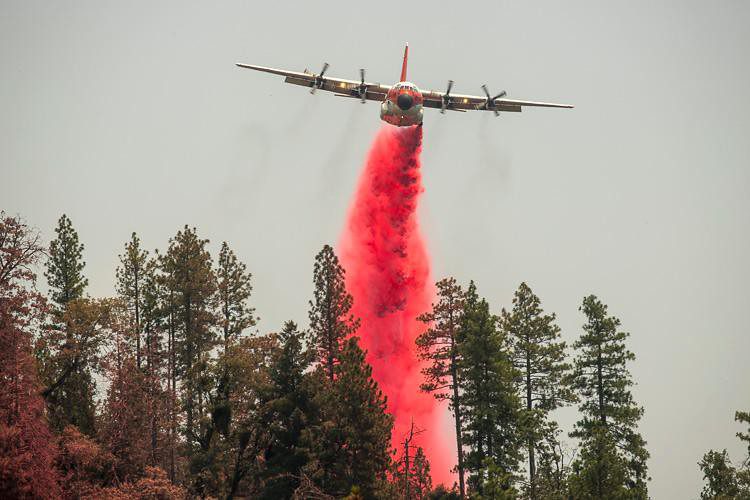A lawsuit in Montana seeks to limit the use of aerial fire retardant to combat wildfires over concerns that it is polluting streams & rivers.
The lawsuit was filed by the Forest Service Employees for Environment Ethics, arguing that dropping retardant in waterways without a permit violates the Clean Water Act & does more environmental harm than good in fighting fires.
According to the Forest Service, aerial retardant is a critical firefighting tool, & a coalition of opponents argue that limits on its use could put more homes & forests at risk. As the 2023 fire season gets underway following years of larger & more devastating wildfires, the case could impact how US wildfires are fought.
Arguments in the case will be heard by a federal judge on Monday in Missoula, Montana, & a ruling is expected soon. Until they get a permit to discharge pollution as required by the Clean Water Act, the lawsuit asks that officials be blocked from using aerial retardants in waterways.
According to a Department of Agriculture report, more than 100 million gallons of retardant were used during the past decade. In a Department of Agriculture report, retardant was found to be likely to adversely affect 32 aquatic species.
According to a 2021 risk assessment commissioned by the Forest Service, health risks to firefighters or other people who come into contact with fire retardant are considered low. In recent years, fire officials have avoided drops inside buffer zones within 300 feet of waterways to minimize pollution.
It was said by the Forest Service that retardant has been dropped into waterways more than 200 times over the past decade, usually by mistake & in less than 1% of the thousands of drops annually.
The argument of the Forest Service Employees for Environment Ethics was that by continuing to use retardant without taking adequate precautions to protect streams & rivers, the Forest Service is disregarding a federal clean water law.
The court has been asked by the group to issue an injunction blocking officials from using aerial retardant units until they get a pollution permit, which Forest Service officials say could take years. As the retardant is a necessary firefighting tool, the environmental damage from fires can exceed the pollution from the aerial retardant.
Among the opponents of the lawsuit are the California Forestry Association municipalities, including Paradise, California, devastated by a 2018 blaze. According to federal officials, extremes in drought & heat, fueled by climate change, are drying out forests in the West & are the leading driver of an increase in fire weather.
There were 68,988 wildfires across the country in 2022, compared to 58,985 wildfires reported in 2021, which is noticeably higher than the 10-year average, according to the National Interagency Fire Center. Wildfires have scorched more than 38 million acres across the country, destroying thousands of homes & structures, over the past 5 years.
The Environment Protection Agency has been asked by the Forest Service to issue a permit allowing it to drop retardant into water under certain conditions, but the process is expected to take more than 2 years.
US District Judge Dana Christensen’s ruling is expected sometime after the opposing sides present their arguments at a Monday hearing in Missoula, Montana. In California, the case is being watched, as a wet winter could help grow grasses that help carry flames to forested areas.

















![A male [[Great white shark]] off [[Isla Guadalupe]], [[Mexico]]. Along with many [[Mackerel scad|Mackarel scads]] seen in the background. Photo Source- Terry Goss (CC BY-SA 3.0)](https://www.karmactive.com/wp-content/uploads/2025/06/White_shark-720x480.jpg)
